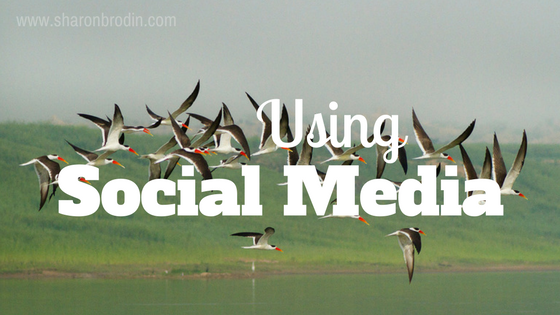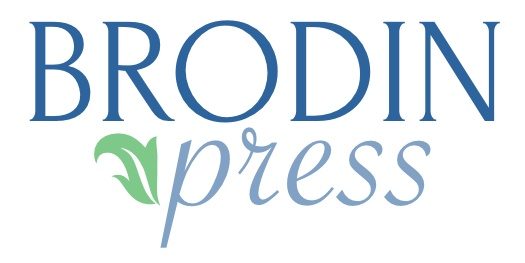
10 years ago this topic wasn’t on the radar. Today we can hardly escape it.
Facebook…LinkedIn…Pinterest…Twitter…Google+…Tumblr…Instagram…
How do you make sense of all the social media options for your business? Jump on the bandwagon and get an account everywhere? Ignore them and hope they go away?
It won’t surprise you that the answer lies somewhere in-between. Read on if you’d like to learn how to use social media in your marketing strategy effectively…without being overwhelmed by trying to keep up with it all.
1. Find the social media channels that fit your target market best
The whole point of social media is relationship. If you want to develop a relationship with people of a certain target market, you need to know where they are.
DigitalInformationWorld.com posted an infographic called The Demographics of Social Media Users (by age). After studying the information there, if your market is seniors you’d know not to invest time, money or effort in Instagram…but maybe would in Facebook where senior users are on the rise.
But if your market is teens, then definitely Instagram is a good fit…and that age group is losing interest in Facebook. See what I mean?
If your market is business professionals, then a strong LinkedIn presence would be smart. If your business relies heavily on visuals and targets women, Pinterest should be one of your top contenders.
It’ll take some research on your part. But then you’ll know the effort you’re putting in is more likely to reach the right market.
And you don’t need to be present on every social media venue out there. Choose two or three of the top picks for your target audience and focus there.
2. Be social
There’s a reason it’s called social media. The whole point is to engage with your target audience in a way that makes you more likable, more trustworthy and helps them get to know you better.
So be there. Don’t just post and leave. If someone comments on a post, respond. Let them know you’re engaged and you’ll invite more engagement from your audience.
I just read somewhere that social media is like being at a cocktail party. It’s informal chit-chat…you’ll probably mention what you do to those you’re talking with, but aren’t going for the heavy sales pitch.
3. Invite dialog
Along with that, the best relationships are built between people who talk together. Skilled communicators know the best way to invite dialog is to ask questions…especially questions about the one they’re talking with.
That works online too. Ask a question you think your readers will be excited about answering. Have you ever noticed successful bloggers always ask a question at the end of their posts? It’s not a coincidence!
4. It’s not about you — it’s about the relationship with your target market
I like to keep this picture in my mind: When I’m out for lunch or coffee with someone, how long will I stay engaged in our conversation if all she talks about is herself and her life?
If it’s just once because it’s been an extraordinary week for her, of course I’m interested. But if it becomes the norm every time I see her, my interest will start to wane, and I may not pursue that relationship much longer.
The same goes for the online relationships with your customers. They’ll indulge some sharing about your business. But mostly what they care about is how you can add value to them. So add value to them!
5. Buy advertising
One of the top gurus in my field of copywriting doesn’t think much of maintaining a presence on social media socially, but he’s found lots of success there with paid ads.
Apparently lots of other businesses have too — internet advertising overtook newspaper ads for the first time in 2013, according to Hootsuite.com. And ads in social media are getting more click-throughs than other types of online ads.
That’s an entire topic in itself.
6. Keep up with it
Like any marketing tactic, you can’t just set it up and hope it develops a life of its own. It won’t!
This is why you only want to focus on the top 2-3 venues for your target market — you’ll need to continue to be present from now on.
How often to post then? Socialbakers.com gives us this advice from their research:
“Well obviously there is no exact ideal number, but there is a range. Typically if you post fewer then 2 posts a week, you will not engage your audience enough for them to maintain a social connection with you, and you will lose engagement. If you post more then 2 per day (as a brand) you will typically lose engagement.”
Good to know!
7. Point it back to your website
Social media by nature is just short little blurbs. It’s a quick “Hey! How are you?” on the street corner on in the hallway between offices. If you’re going to give your customers details about your product or service you won’t stay in the hallway or on the street. You’ll invite them to your office or the local coffee shop so you can sit and have a conversation about it.
Being in front of your prospects and customers through social media means they’re more likely to come visit you on your website. That’s where the meaty, valuable content is waiting for them.
Tying your social media posts to your web content provides that invitation to something they probably don’t know is there.
8. Re-purpose content with and from your other marketing channels
In fact, your social media posts can come directly out of your web content.
Did you just write an article or blog post about how your new service X will save your customers all kinds of money? Pull a quote out of it and use it for your social media blurbs.
Pull five quotes out of it and you’ve got your posts for the whole week.
A note here: One of the recommendations I’ve gotten for managing all your social media platforms in one place is Hootsuite.com. It’s a great tool for both management and metrics.
9. Understand that social media is only part of your marketing strategy
Even social media experts like Amy Porterfield won’t tell you social media is a one-stop marketing plan.
It’s not enough to just be chatting with your prospects and customers socially. At some point you need people to buy from you.
If and when you get serious about social media for your business, be sure it’s written into your marketing plan along with the other tools you’re using.
Will using social media (or not) make or break your business?
Probably not…yet.
If you’re a B2B company, it may not be as important for success as B2C. According to the 2014 B2B Web Usability Report only 1 in 4 B2B buyers look for social media buttons on a website. Only 1 in 10 think social media activity from that vendor is important in establishing credibility. A full third don’t consider social media important in the buying process.
Marketing successfully will make or break your business however. And social media as a tool is getting more and more effective if used wisely and as part of your overall marketing strategy.

1 thought on “How to Really Use Social Media in Your Marketing Strategy”
Comments are closed.